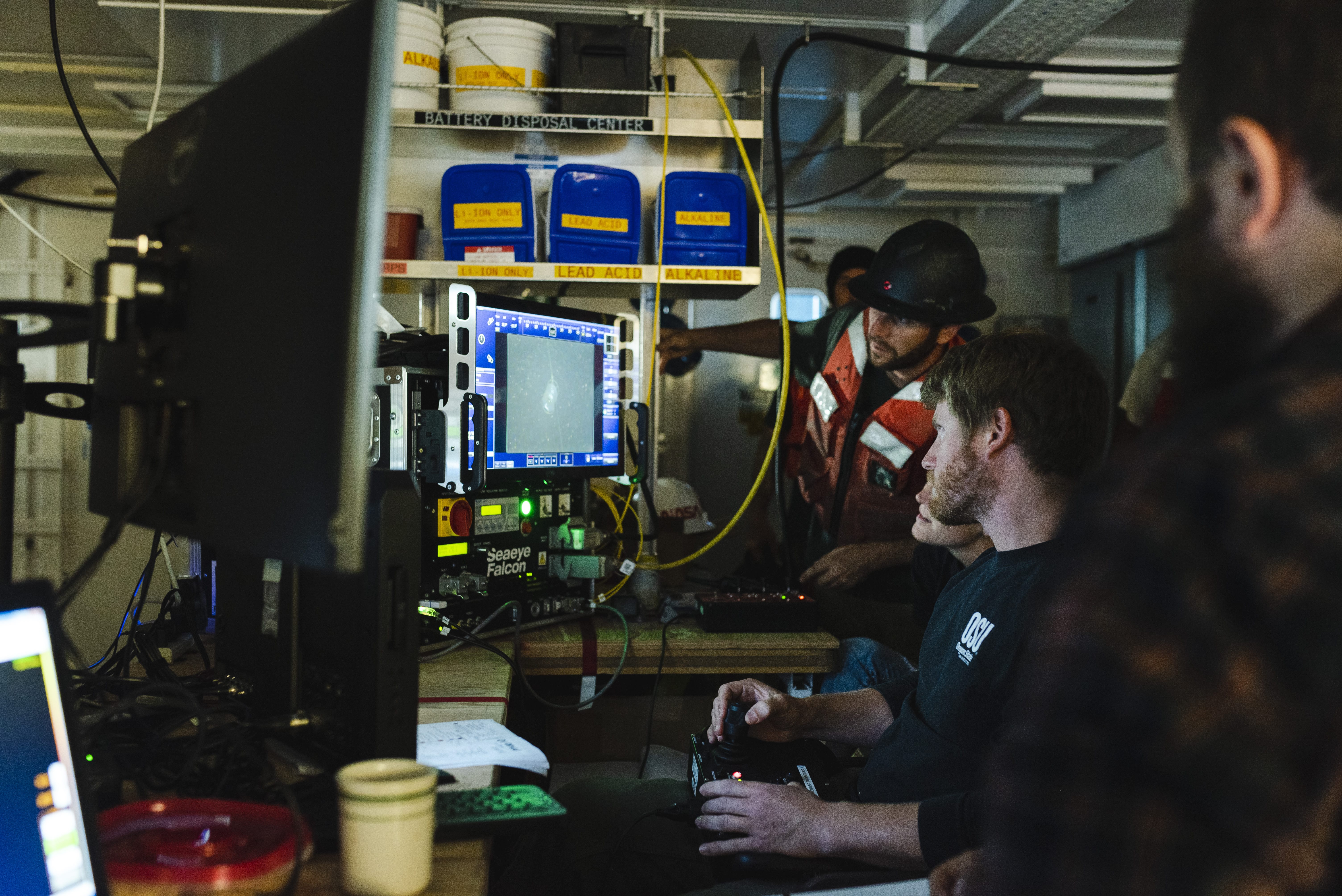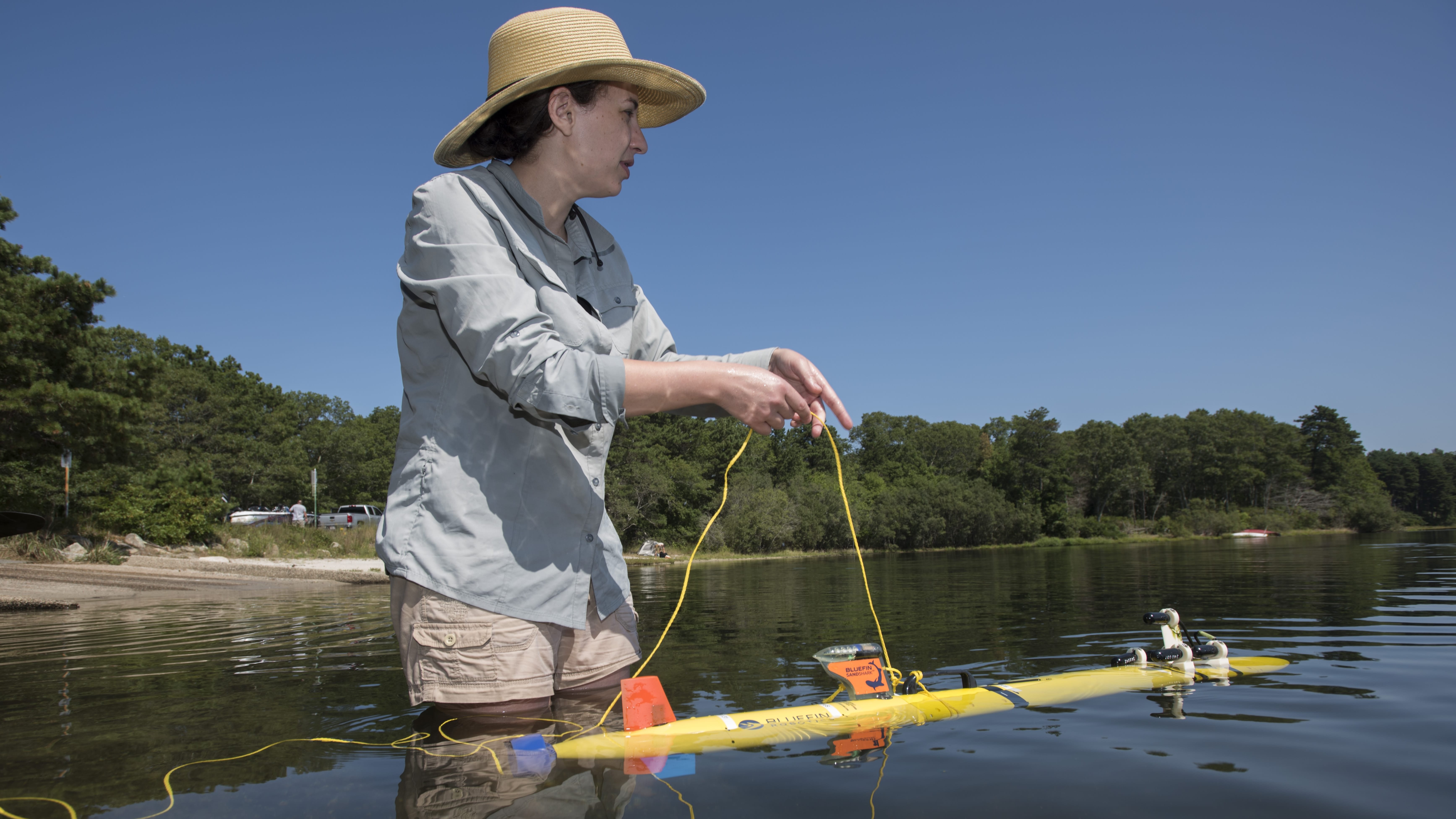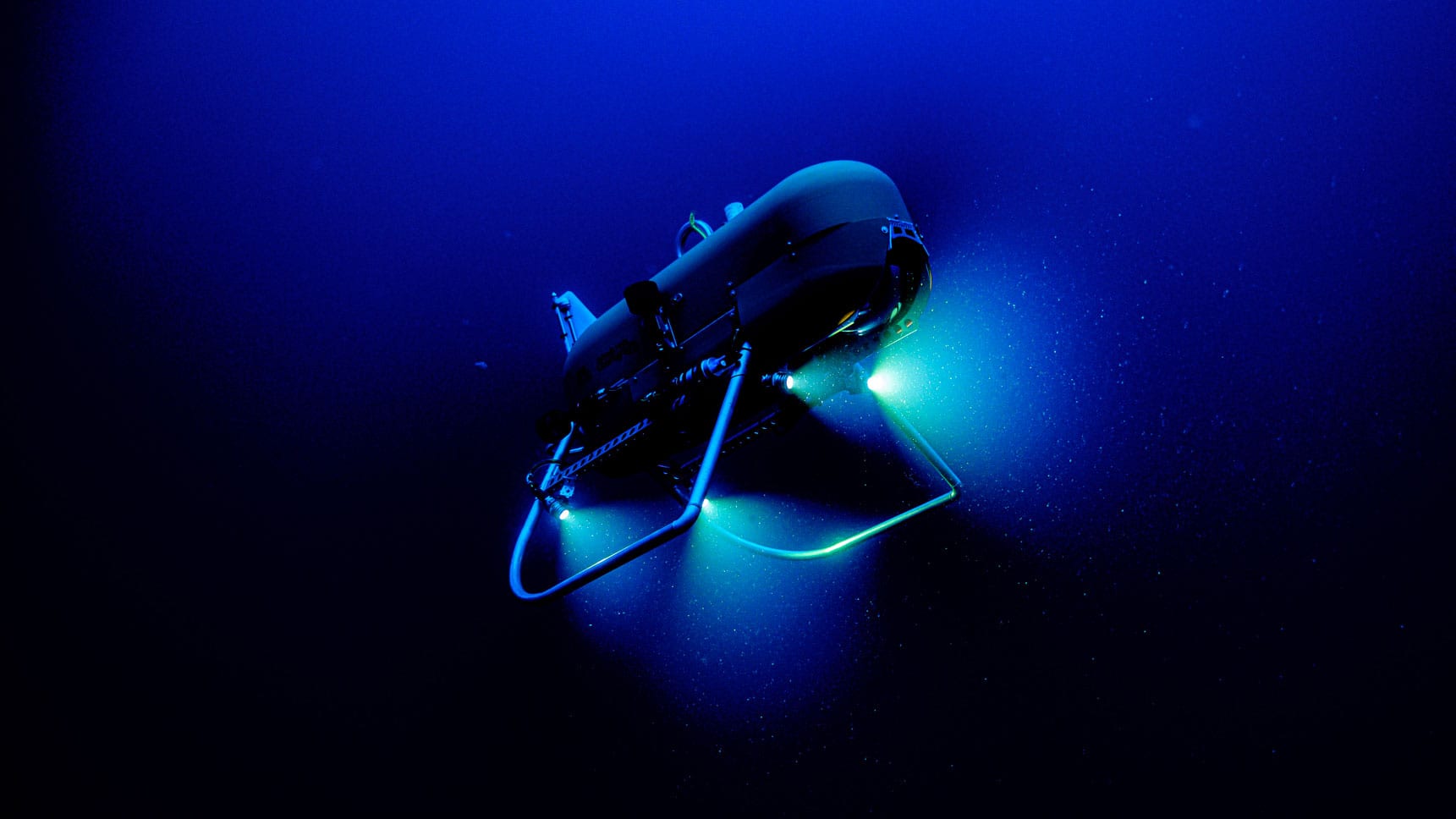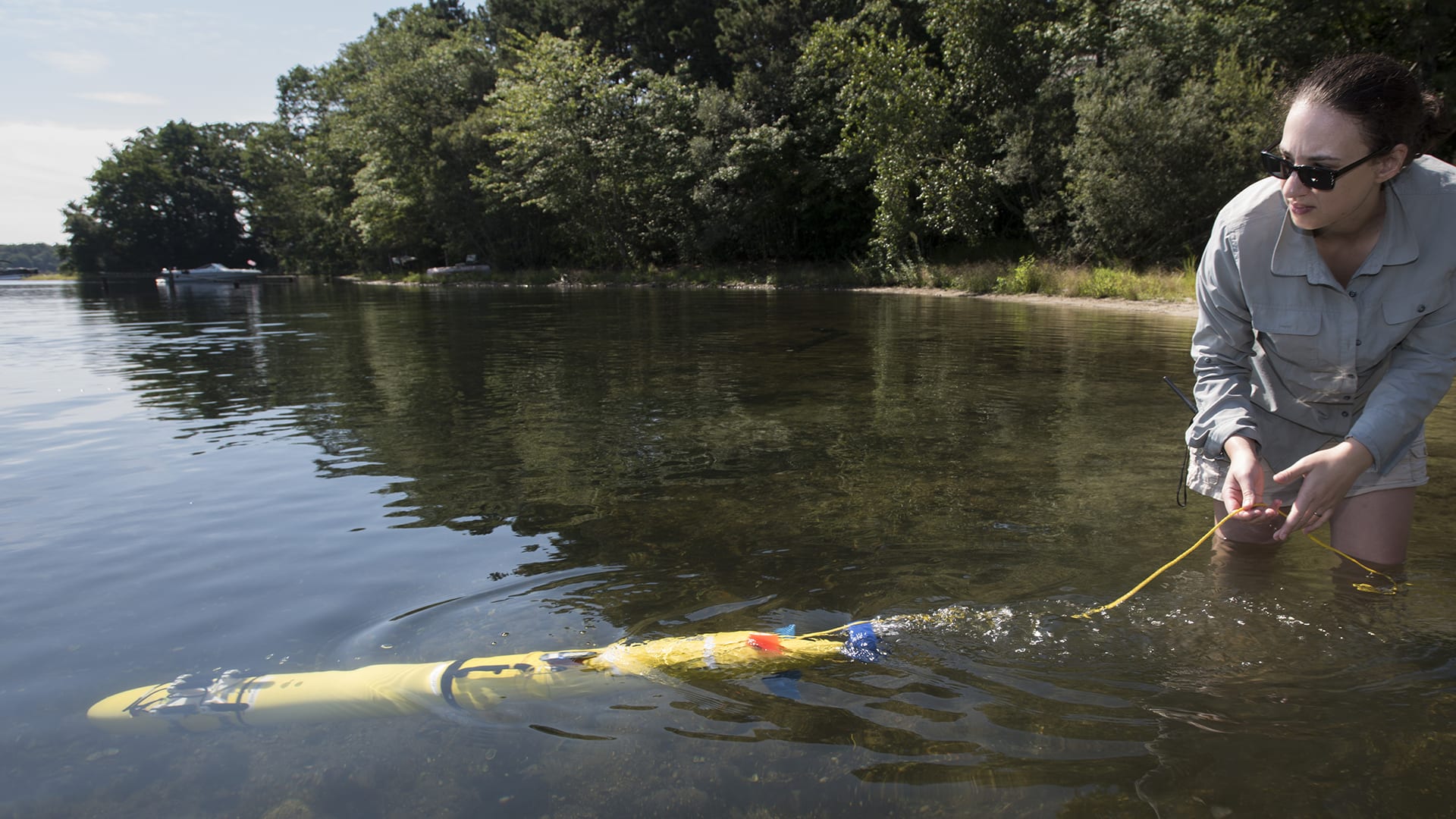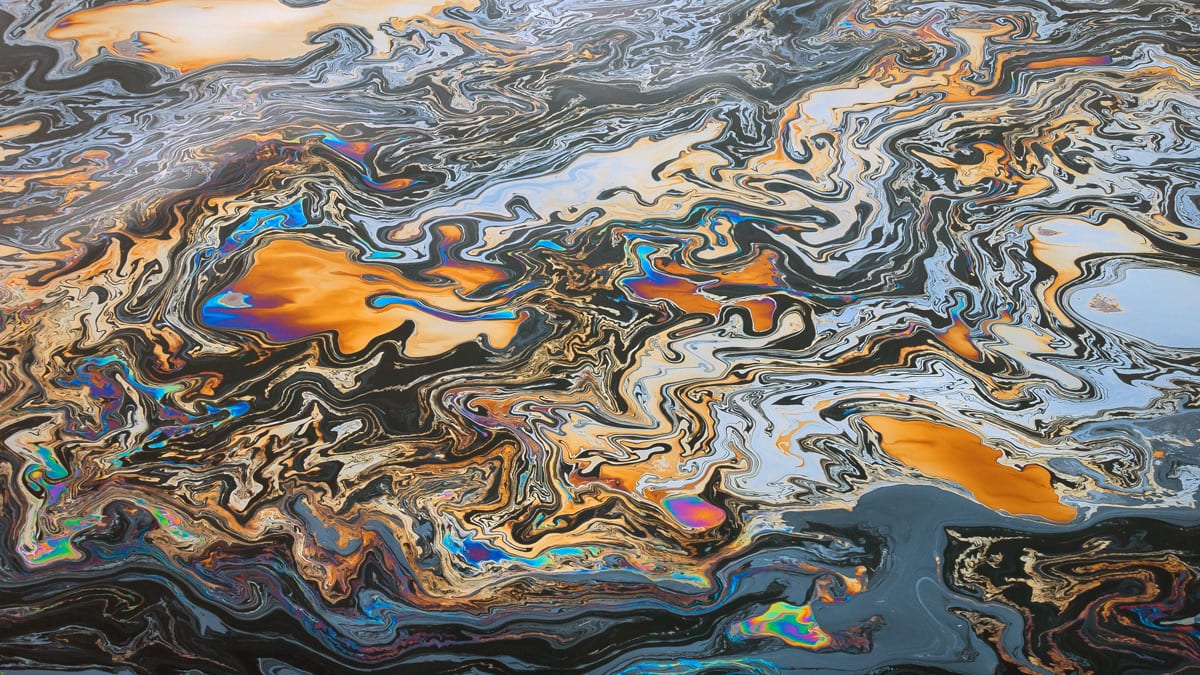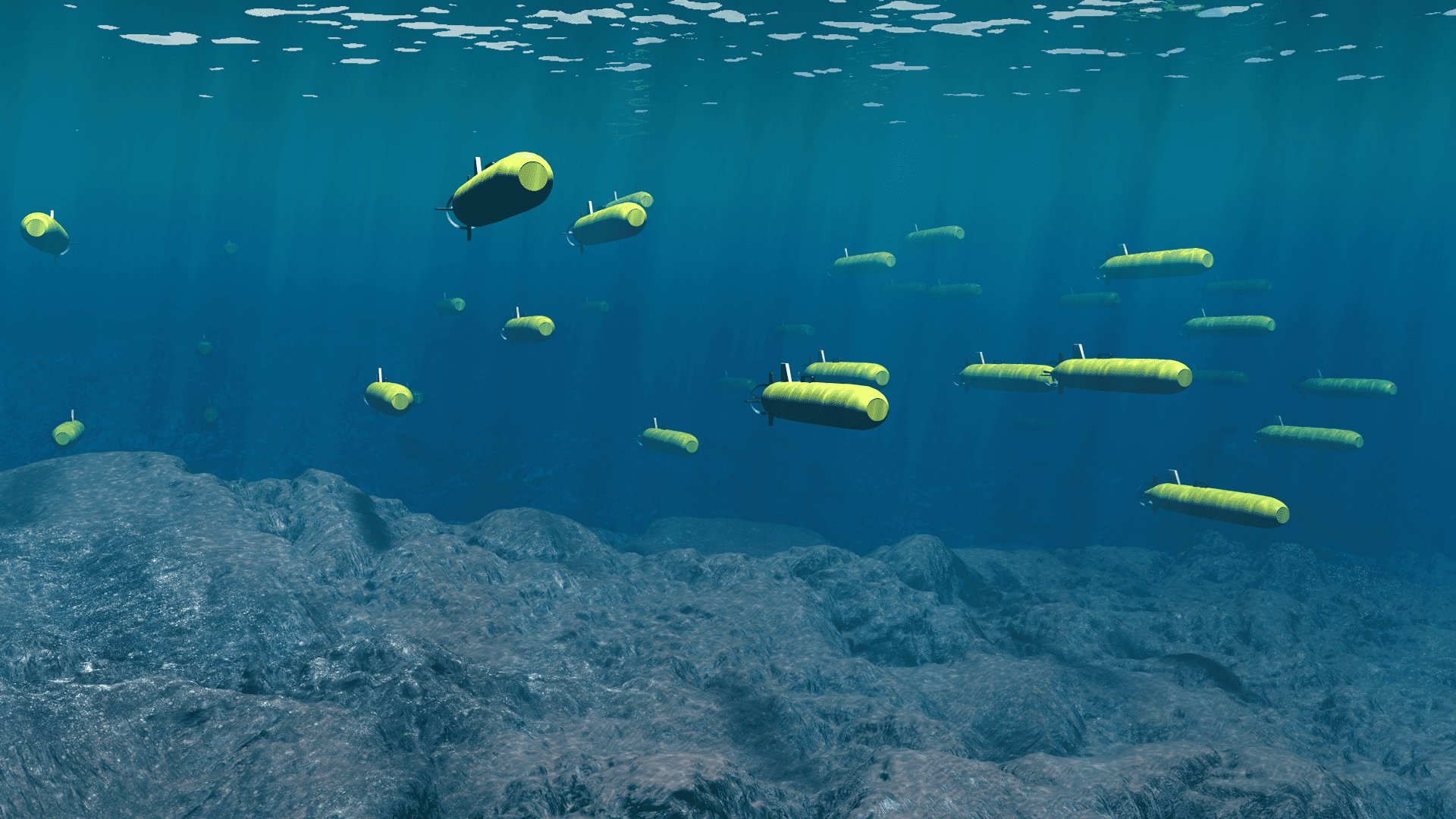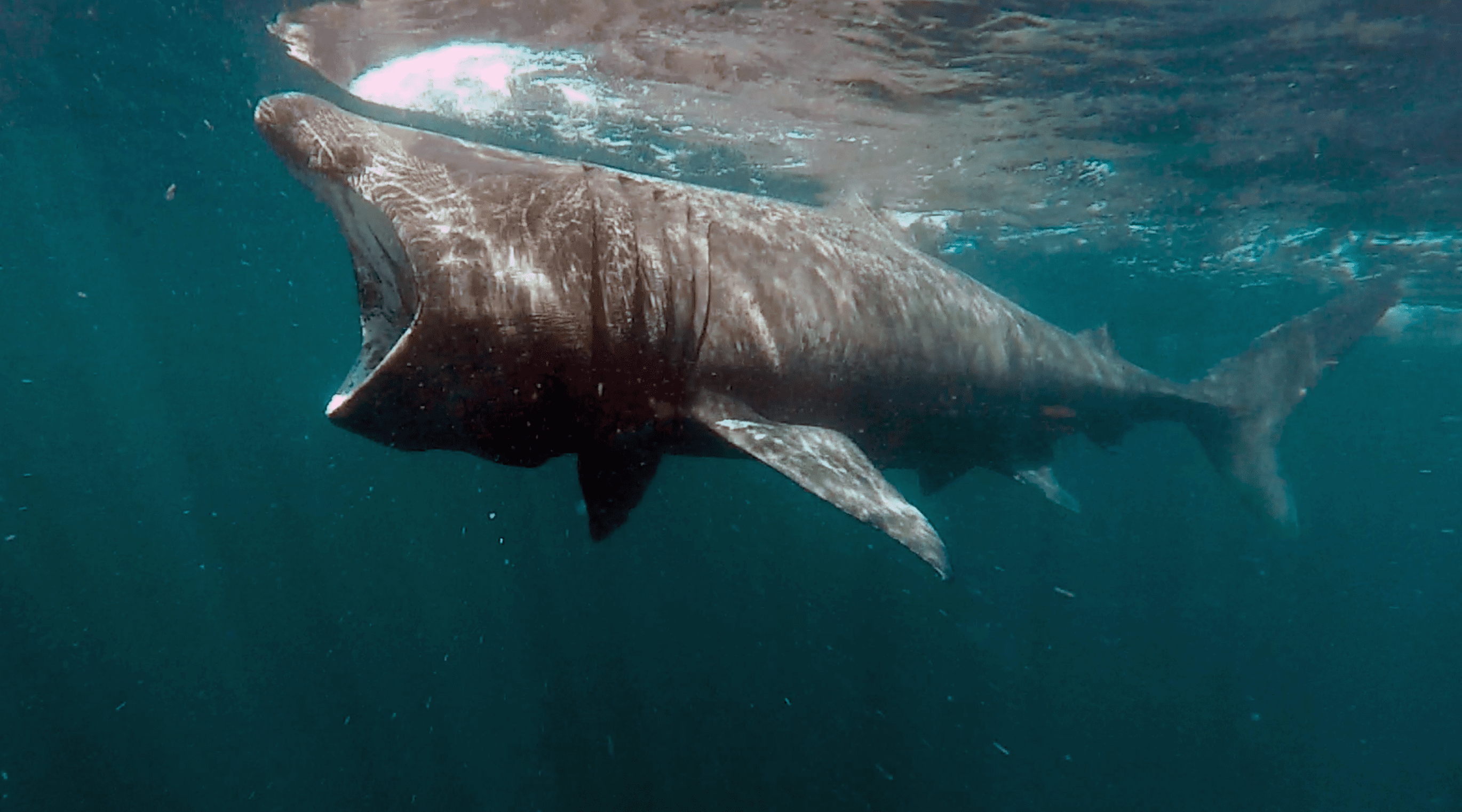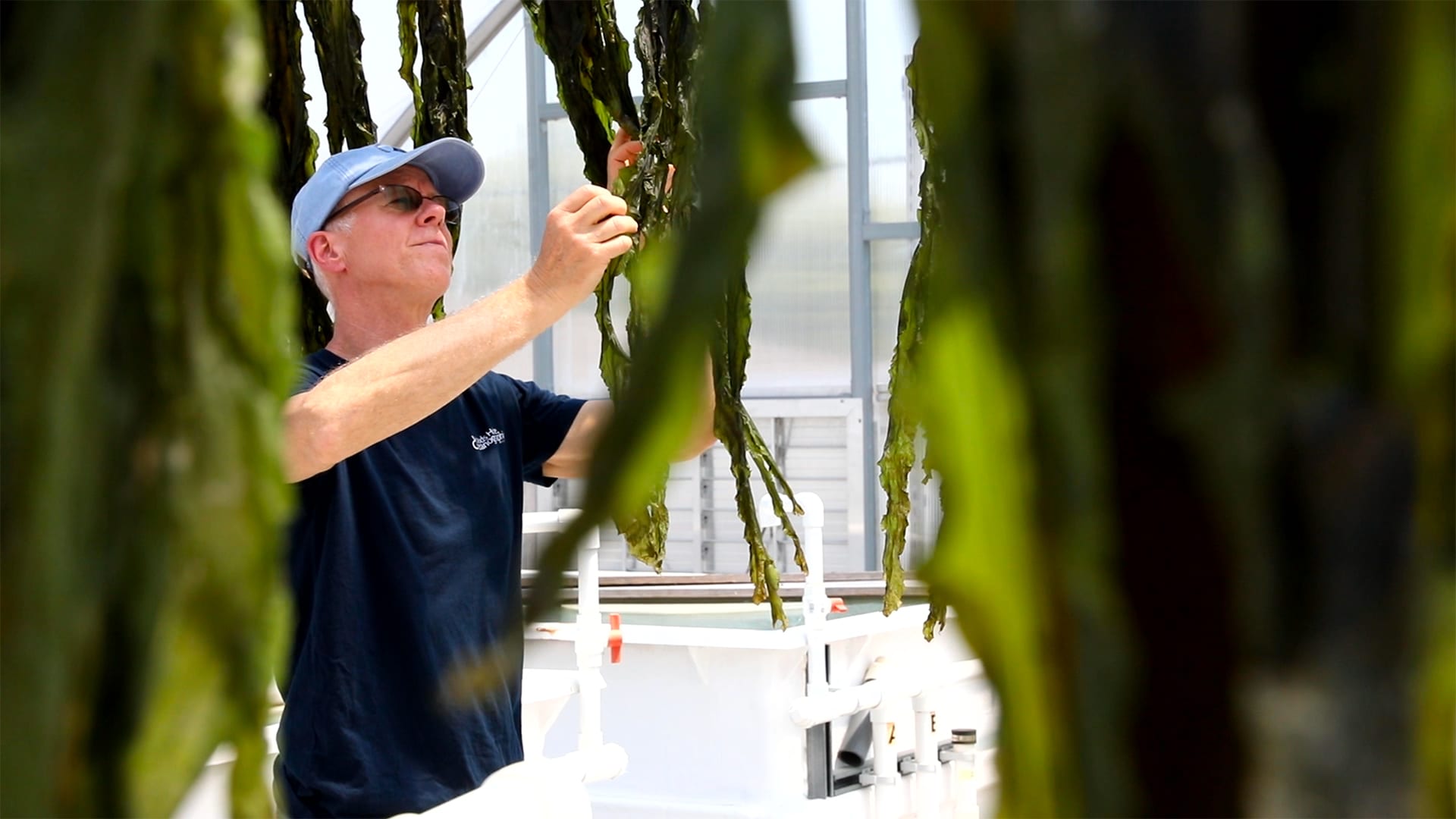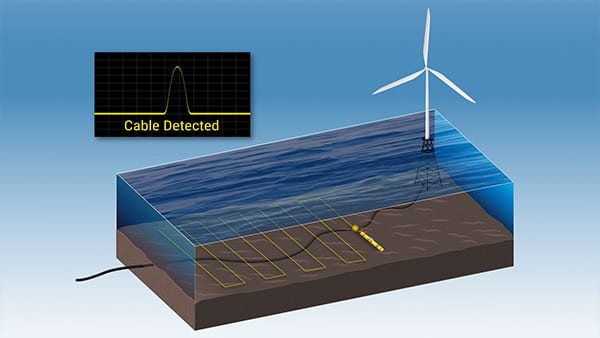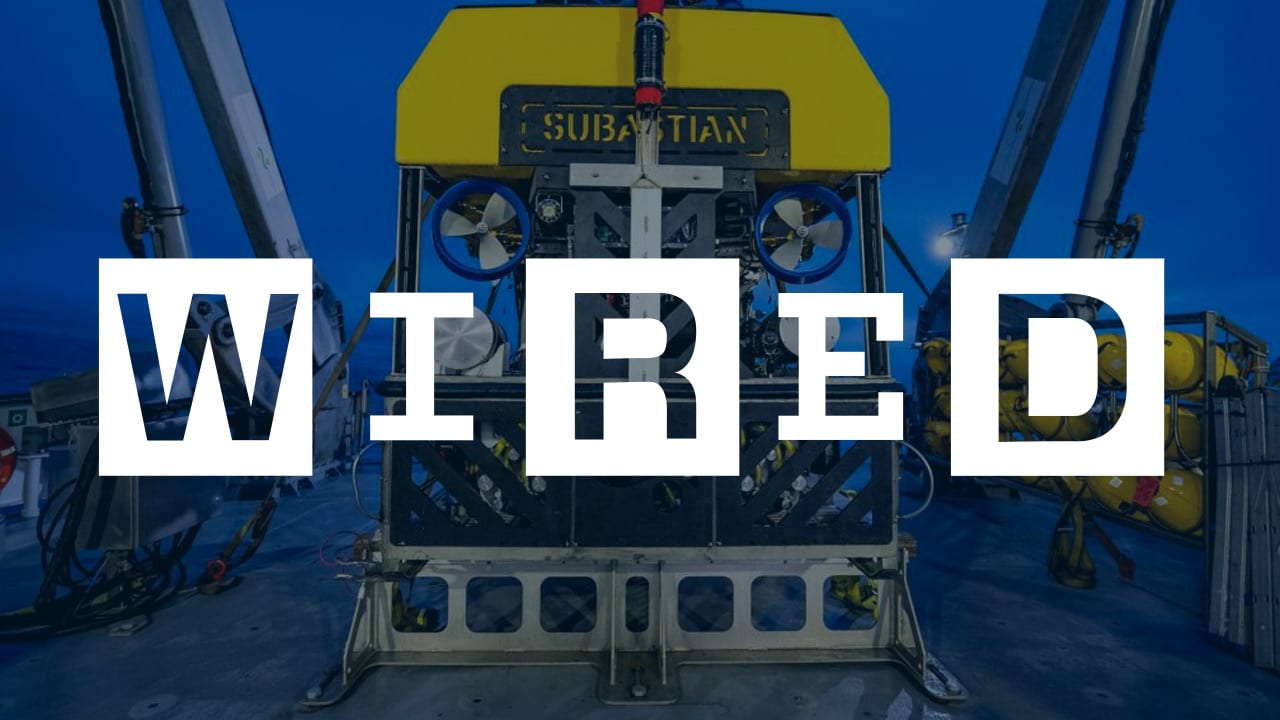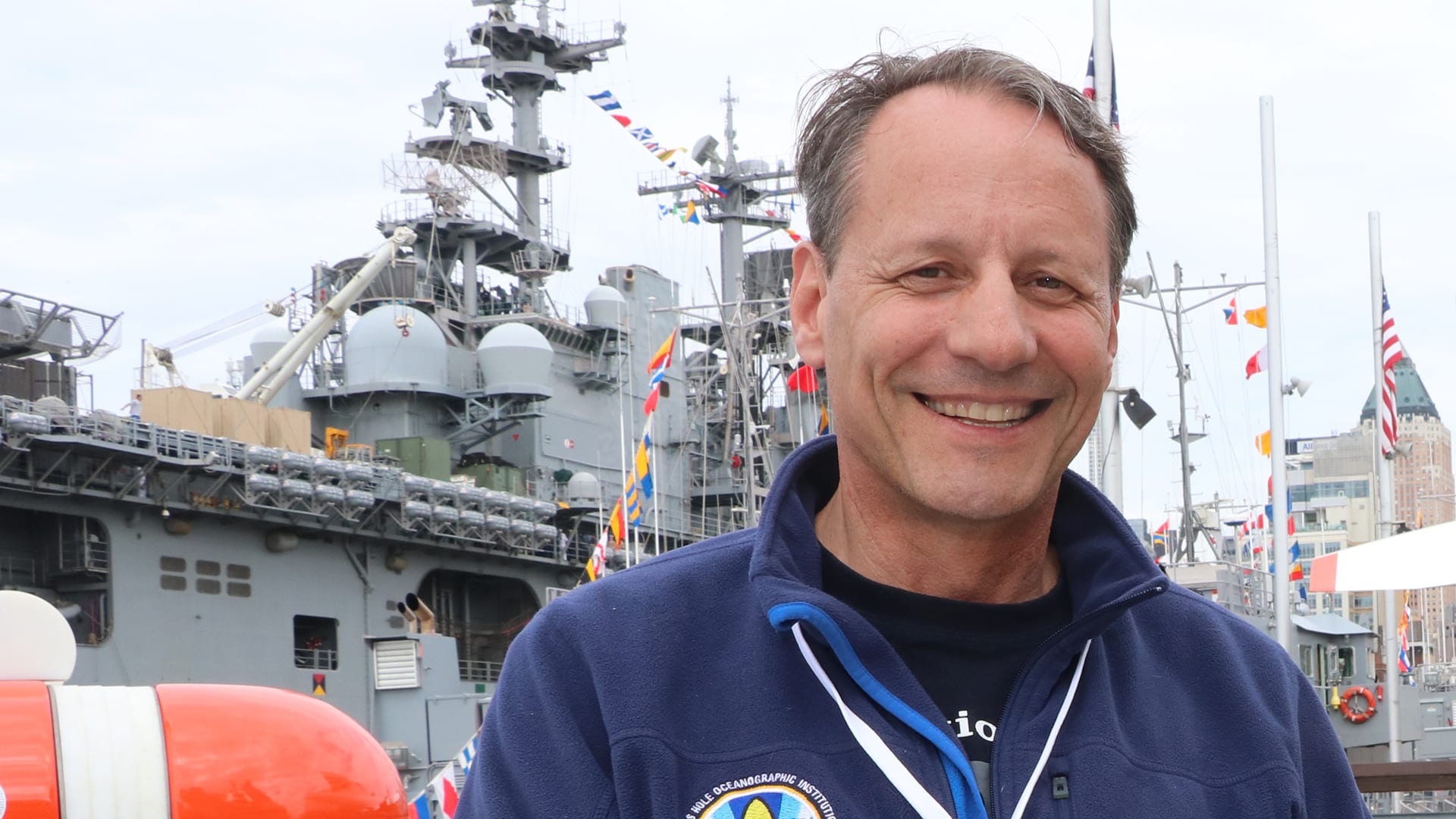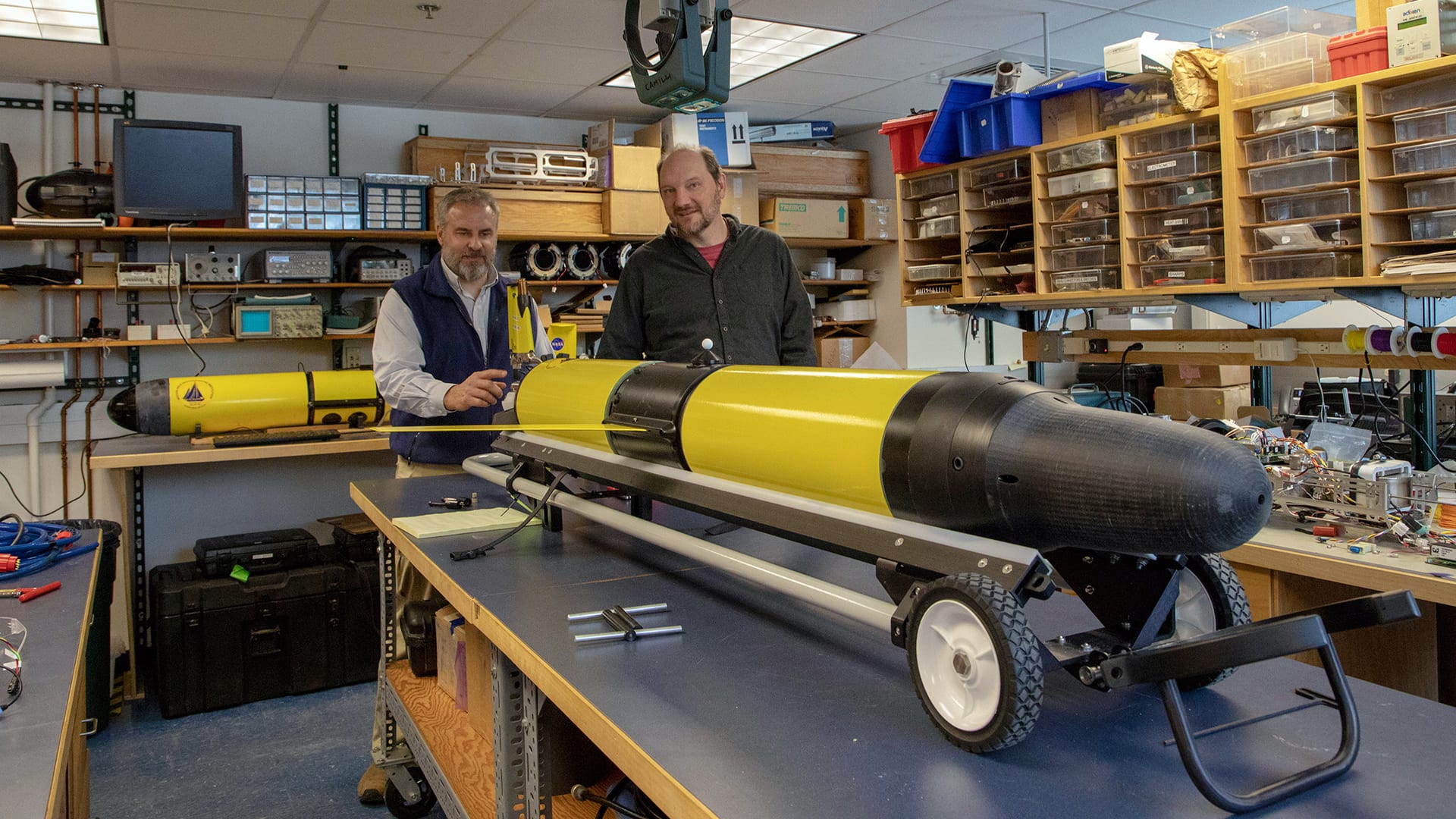Applied Ocean Physics & Engineering
Flight of the underwater falcon
How a remotely operated vehicle made by Saab is lending a watchful eye to scientific mooring operations.
Read MoreThe hive mind behind a swarm of submersibles
The vastness of our oceans demands extensive study methods. Erin Fischell, an assistant scientist in the Department of Applied Ocean Physics and Engineering, has been experimenting with a swarm of autonomous underwater vehicles that aim to both minimize cost and maximize the scope of scientific assessment at sea.
Read MoreThe Rise of Orpheus (Part 2)
WHOI’s new deep-sea autonomous underwater vehicle moves one step closer to exploring the hadal zone—the deepest region of the ocean—to search for new clues about the limits of life on Earth, and possibly beyond.
Read MoreErin Fischell wins Moore Inventor Fellowship
Erin Fischell, an assistant scientist in Applied Ocean Physics and Engineering at Woods Hole Oceanographic Institution, has been awarded the Moore Inventor Fellowship for her work on ocean robotics.
Read MoreBest of Constant Wonder
WHOI Research Engineer Jeff Kaeli talks about the 2017discovery of the San José, a sunken ship from 1708 loaded with treasure valued up to $17 billion. (segment begins 24:05)
Read MoreRapid Response at Sea
As sea ice continues to melt in the Arctic and oil exploration expands in the region, the possibility of an oil spill occurring under ice is higher than ever. To help first responders cope with oil trapped under ice, ocean engineers are developing undersea vehicles that can map oil spills to improve situational awareness and decision making during an emergency.
Read MoreJames Cameron challenges Victor Vescovo’s ‘record breaking’ trip to deepest part of ocean: ‘it’s flat down there, impossible to dive deeper’
Cameron and researchers with the WHOI say the difference between the depth recorded by Deepsea Challenger and Vescovo’s submersible relates to the technology used. Measuring ocean depth is not as…
Read MoreWhale populations in New York Harbor are booming—here’s why
Woods Hole Oceanographic Institution and the New York Aquarium teamed up to deploy a high-tech acoustic buoy named Melville, 22 miles south of Fire Island. Whales communicate mostly via sound,…
Read MoreMaking the planetary personal: the roots of climate science
In the 1950s, a timber cabin on the grounds of the Woods Hole Oceanographic Institution in Falmouth, Massachusetts, became a hub for annual meetings where Simpson, meteorologist Jule Charney and…
Read MoreA shipwreck worth billions off the coast of Cartagena
On 27 November 2015, the San José was “officially” discovered by a robotic submarine called the REMUS 6000, which is operated by the US-based Woods Hole Oceanographic Institution.
Read MoreRapid Response at Sea
As sea ice continues to melt in the Arctic and oil exploration expands in the region, the possibility of an oil spill occurring under ice is higher than ever. To help first responders cope with oil trapped under ice, ocean engineers are developing undersea vehicles that can map oil spills to improve situational awareness and decision making during an emergency.
Read MoreLocal fishermen assist leatherback research
After several years, Kara Dodge began to do other work with turtles, in particular a “TurtleCam” project with Woods Hole Oceanographic Institution engineer Amy Kukulya. The project involved tagging and…
Read MoreNew Technology Will Listen For Underwater Whale Traffic In An Effort To Reduce Ship Strikes
Scientists from the Benioff Ocean Initiative and Woods Hole Oceanographic Institution have deployed a a hydrophone, or underwater microphone, to listen for whale traffic in the Santa Barbara Channel. They…
Read MoreUnderwater robots swarm the ocean
Researchers test a new, acoustic-based navigation system to solve a problem that oceanographers have grappled with for years—getting multiple underwater robots to monitor the ocean cooperatively in swarm-like fashion.
Read MoreScientists Team With Fishermen on Tracking Technology
Scientists from the Center for Coastal Studies and the Woods Hole Oceanographic Institution are working with local commercial fishermen to install video monitoring equipment on gillnets.
Read MoreSharkCam reveals secret lives of basking sharks in UK
An autonomous underwater vehicle (AUV) known as the REMUS SharkCam has been used in the UK for the first time to observe the behaviour of basking sharks in the Inner Hebrides, off the west coast of Scotland.
Read MoreInfrared Cameras Could Help Ships Avoid Whales
An interview with Dan Zitterbart, a WHOI scientist who is testing a new thermal infrared imaging system to detection whales in busy waterways to prevent ship strikes.
Read MoreKing Kelp
To help fuel our future energy needs, researchers are sizing up thousands of blades of sugar kelp—a promising source of biofuels—to breed strains that grow larger, heartier, and more abundantly.
Read MoreA new way of “seeing” offshore wind power cables
Eager to share best practices and technical know-how with the offshore wind sector, WHOI researchers test out an autonomous underwater vehicle (AUVs)—a staple of oceanographic research—to see if it can perform subsea cable surveys faster and more economically than using large and expensive ships.
Read MoreWIRED Magazine: Seafloor Maps Reveal Active Fault Lines
Imagining new vehicles for exploration
Andy Bowen is the kind of guy who wakes up in the middle of the night unable to go back to sleep, because he’s just too excited about a solution he’s just imagined for a new robotic invention.
Read MoreNavigating the Changing Arctic
New, fully autonomous glider will collect critical-but-scarce ice thickness measurements from below the surface of the Arctic ocean.
Read MoreNavigating the Changing Arctic
New, fully autonomous glider will collect critical-but-scarce ice thickness measurements from below the surface of the Arctic ocean.
Read More
